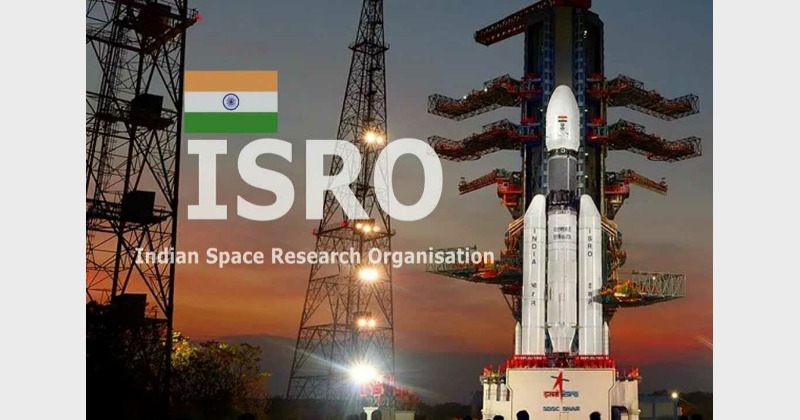The Chandrayaan-3 mission marked a historic achievement by successfully landing the Vikram Lander safely and softly on the lunar surface
 KRC TIMES Desk
KRC TIMES Desk

Dr. Vishal Sharma
Who could have imagined, a country that gained independence in 1947 and couldn’t even manufacture a needle, would emerge as one of the world’s leading space powers in less than eight decades? On August 23, 2023, the Chandrayaan-3 mission marked a historic achievement by successfully landing the Vikram Lander safely and softly on the lunar surface.
This remarkable feat established India as the fourth country to achieve a Moon landing and the first to land near the Moon’s southern polar region. Furthermore, August 23 was officially designated as “National Space Day,” with India set to celebrate its maiden National Space Day on August 23, 2024 having the theme “Touching Lives while Touching the Moon: India’s Space saga”.
This day celebrates India’s advancements in space technology and its journey from a humble beginning to becoming a key player in the global space community.
The Genesis of India’s Space Program India’s journey into space began in the early 1960s with the establishment of the Indian National Committee for Space Research (INCOSPAR) under the visionary leadership of Dr. Vikram Sarabhai, who is widely regarded as the father of the Indian space program.
In 1962, the Department of Atomic Energy (DAE) was established, and INCOSPAR was formed under its umbrella. INCOSPAR was a precursor to what would eventually evolve into the Indian Space Research Organisation (ISRO), which today stands as one of the most respected space agencies in the world.
The initial focus of INCOSPAR was on developing and launching sounding rockets for atmospheric research. These early efforts culminated in the launch of India’s first sounding rocket, Nike-Apache, from the Thumba Equatorial Rocket Launching Station (TERLS) in 1963.
Thumba, a small fishing village in Kerala located near the magnetic equator, became the site of this historic event. The launch marked India’s entry into the field of space research, and the successful deployment of the rocket was a significant achievement, especially given the limited resources and infrastructure available at the time.
The Formation of ISRO
The establishment of ISRO in 1969 was a major milestone in India’s space history. ISRO was formed with the objective of harnessing space technology for national development and addressing the needs of the country through satellite communication, remote sensing, and meteorology.
Dr. Vikram Sarabhai’s vision was clear: India’s space program would be self-reliant and would focus on applications that could directly benefit society.
Key Milestones in India’s Space Journey
i. Aryabhata (1975): India’s first satellite, Aryabhata, was launched on April 19, 1975, marking a significant milestone in the country’s space journey. Named after the ancient Indian mathematician and astronomer, Aryabhata was designed for conducting scientific experiments in the fields of X-ray astronomy, solar physics, and cosmic ray studies.

Although it was launched by the Soviet Union’s Kosmos-3M rocket from the Baikonur Cosmodrome, Aryabhata was a fully indigenous project developed by ISRO, symbolizing India’s growing capabilities in space technology.
ii. Satellite Instructional Television Experiment (SITE) (1975-1976): From 1975 to 1976, ISRO, in collaboration with NASA, conducted the Satellite Instructional Television Experiment (SITE), one of the largest social experiments ever conducted in space technology.
iii. Bhaskara-I (1979): Launched on June 7, 1979, Bhaskara-I was India’s first indigenous remote sensing satellite. Named after the famous Indian mathematician Bhaskara, the satellite was designed to gather data for applications in hydrology, forestry, oceanography, and meteorology.
iv. Rohini Satellite Series and SLV-3 (1980): In 1980, India achieved a major milestone with the successful launch of the Rohini Satellite RS-1 using its first indigenous launch vehicle, the Satellite Launch Vehicle (SLV-3). On July 18, 1980, the SLV-3 placed RS-1 into low Earth orbit, making India the seventh country in the world to develop the capability to launch satellites independently.
v. INSAT Series (1983 onwards): The Indian National Satellite System (INSAT) series marked a significant leap in India’s capabilities in telecommunications, broadcasting, and meteorology.
Launched in 1983 with INSAT-1B, the series revolutionized communication infrastructure in India by providing television broadcasting, satellite-based telecommunication, and meteorological services across the country. The INSAT satellites played a crucial role in expanding television coverage to rural areas.
vi. PSLV and GSLV Programs: The Polar Satellite Launch Vehicle (PSLV), first successfully launched in 1994, became ISRO’s workhorse for launching satellites into polar orbits. It has been used for launching satellites for remote sensing, Earth observation, and scientific missions, including India’s prestigious Chandrayaan and Mangalyaan missions.
The Geosynchronous Satellite Launch Vehicle (GSLV) programs, designed for launching heavier payloads into geosynchronous orbits, further expanded India’s capabilities.
vii. Chandrayaan-1 (2008): Chandrayaan-1, India’s first mission to the Moon, launched on October 22, 2008, marked a monumental achievement in the country’s space exploration efforts. This mission, designed to explore the lunar surface and create a detailed map of its mineral composition, made a groundbreaking discovery by detecting water molecules on the Moon’s surface.
The discovery of water, particularly near the lunar poles, was a significant contribution to global lunar research and garnered international acclaim, placing India among the leading nations in space exploration.
viii. Mangalyaan (2013): India’s interplanetary missions also known as Mangalyaan, was launched on November 5, 2013, and represents one of ISRO’s most celebrated achievements.
Mangalyaan made India the first Asian country to reach Mars orbit, first country to enter Mars orbit in first attempt and that at a very low cost of approximately 500 crores, and only the fourth space agency in the world to do so, following NASA, the Soviet space program, and the European Space Agency.
ix. Record Satellite Launch in 2017: On February 15, 2017, India set a new world record with the launch of 104 satellites in a single mission, solidifying its position as a leader in space technology.
This historic event was carried out by ISRO using its highly reliable Polar Satellite Launch Vehicle (PSLV-C37). The mission’s real highlight was the deployment of 103 smaller “nanosatellites” from various countries, including the United States, the Netherlands, Switzerland, and Israel.
This feat broke the previous record of 37 satellites launched by Russia in 2014. x. Chandrayaan-2 (2019): Chandrayaan-2, launched on July 22, 2019, was India’s second mission to the Moon and one of ISRO’s most ambitious projects.
The mission encountered a setback when the Vikram lander lost communication with ISRO during its final descent to the Moon’s surface on September 6, 2019. Despite the lander’s failure to achieve a soft landing, the mission was still considered a significant success. The orbiter remains operational and has provided critical
A Vision for the Future
India’s space program, from its modest beginnings to its current stature, is a testament to the power of vision, determination, and innovation. As ISRO continues to pursue ambitious missions and expand its capabilities, the future of India’s space program looks bright.
With plans to explore new frontiers, develop cutting-edge technologies, and contribute to global space efforts, India is poised to play an increasingly significant role in the exploration and utilization of outer space.
As India looks to the stars, its space program is not just a journey into the unknown, but a journey that holds the promise of new discoveries, advancements, and opportunities for humanity as a whole.
National Space Day is not only celebrating the past achievements of India’s space missions but also focus on the future. It is a day to honor the scientists, engineers, and visionaries who have contributed to the nation’s space endeavors.
(The author is Head of the department of Electronics & IT GCW Udhampur, Jammu & Kashmir, India)



